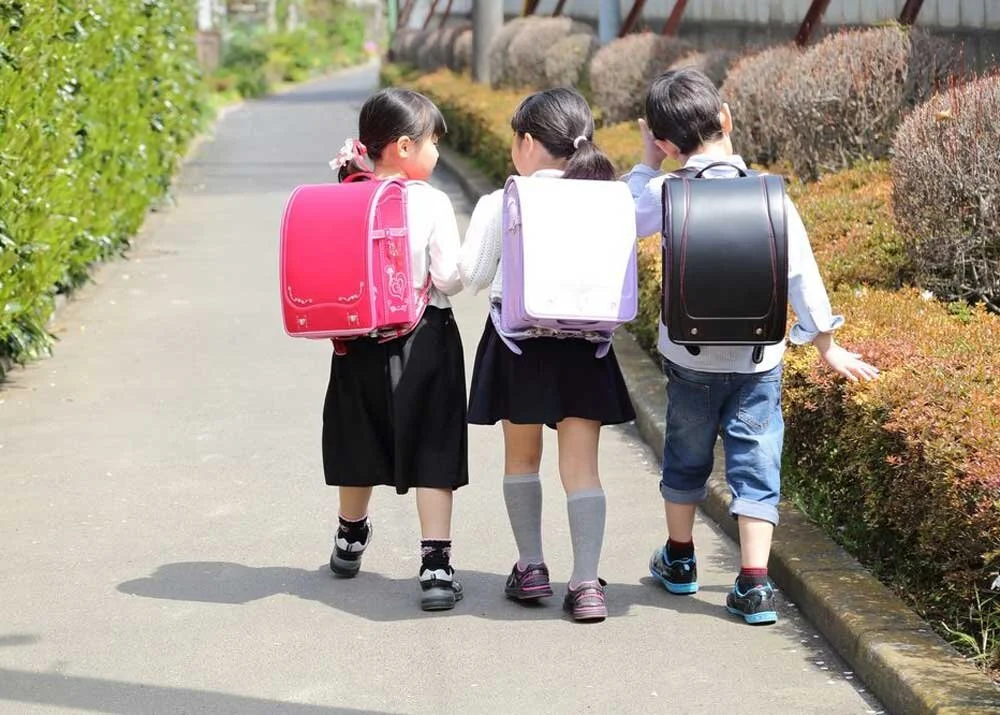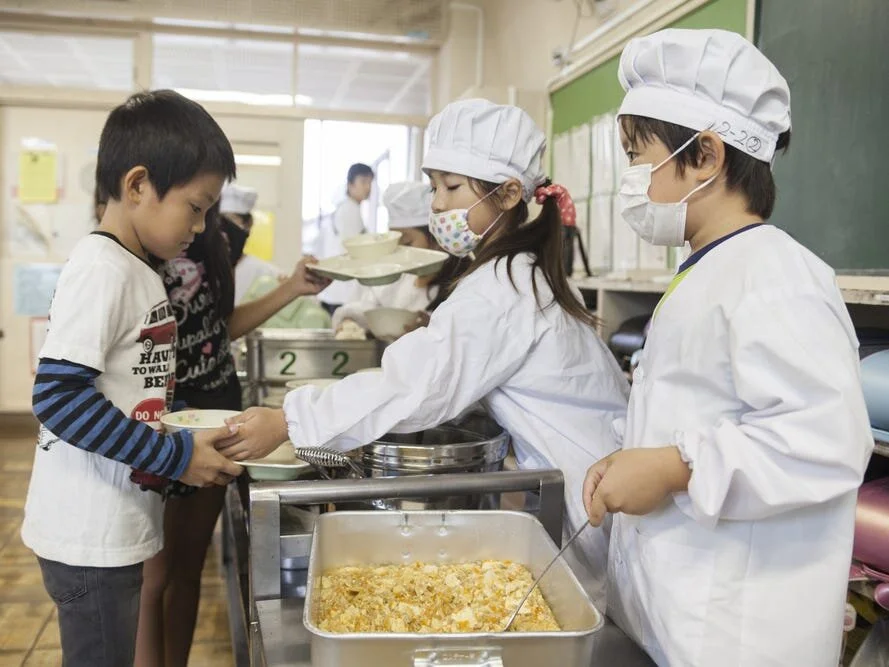An Interesting Look at Life in Japanese Public Schools!
Indoor slippers, school lunches, cleaning up the classroom, and identical backpacks. These are some unique, but common features of Japanese public schools. Schooling in Japan is not just a rite of passage for children. The high quality education and traditional approach taken towards education is a source of national pride!
We’ll take you through the most interesting aspects of the school day of a Japanese student!
Picture via From Japan Blog
Before leaving his home, most students slip on their Randoseru. It’s a large, leather backpack used by most students in school.
In recent years, these rounded leather backpacks have gained much popularity. It is made of firm leather or leather-like synthetic material that is often hand-stitched together, and is most commonly used in Japan by elementary schoolchildren. Traditionally it is given to a child upon beginning his or her first year of school, and the child uses the same bag until grade 6 (~12 years old).
It’s not just any backpack. Walk through a school district in Japan and you’ll see these backpacks perched on almost every child. Its traditional colours—black for boys and red for girls—and iconic shape and design are now slightly changing as times move forward, but it’s still almost completely the same.
Picture via Japan Objects
These backpacks, beautiful as they are, do not come cheap. Ranging from approximately ¥30,000 to the ultra-luxurious brand name ¥120,000 (SGD385 – SGD1550), this is no small purchase. However, parents willingly fork out these huge sums because the Randoseru is more than just a backpack. It’s a rite of passage and symbolises a child’s most innocent and formative years. Moreover, when taken care of, these bags last far past elementary school and into adulthood. Some are passed on for the next sibling to use.
A bonus feature of the Randoseru? Some come with reflective strips that alert cars to the child’s presence on the roads. The stiff, rounded backpacks also serve as a cushioning for a child’s back in the event of an accident!
The most authentic Randoseru come from Japan, but if you can’t travel there and desperately need to get your hands on one, you can check out this one on Lazada.
Picture via Yabai
Upon reaching school, students carefully remove their dirty outdoor shoes and slip them into their designated locker. In some schools, each student is allocated a locker with their name on it! Students then put on their clean, indoor shoes!
Seen this seen play out in Japanese documentaries or anime? These shoes are known as Uwabaki or Uwagutsu. Students are expected to change from their soiled, outdoor shoes to these clean slip-ons. You’d realise that not wearing shoes indoors is a common practice in all aspects of Japanese life, and it is further enforced in schools!
Picture via Sutekisutekisuteki
At the entrance of the school, students place their outdoor shoes on a shelf or locker called a “geta bako” and put on “uwagutsu” or indoor slippers. Though the box is primarily used as shoe storage, it can double as a letter box for students to leave notes for their friends! Many, however, consider the “geta bako” dirty (from the shoes) and avoid leaving notes or other effects there.
School Lunches (Kyushoku)
Speak of school lunches in Japan and adorable bento boxes with rice balls shaped like cartoon characters will quickly pop into your mind. While this is the case for some, a large majority of school students subscribe to a compulsory meal plan when in school. This means that they are only allowed to eat food provided by the lunch system. The food is also affordably priced - a full lunch with rice, side dishes, and a soup comes up to about USD2.50.
Make no mistake - the food is generously portioned, and actually quite tasty. Japanese schools tend to ensure that meals are balanced, with no unhealthy or sugary snacks. Students are also taught not to be wasteful and have to eat everything served to them!
Picture via Pop Japan
The most interesting aspect about school lunches? Students serve each other food, rather than relying on cafeteria aunties! They also eat in their classroom instead of a dining hall or cafeteria. A typical lunch is seen in this picture above. What’s on the menu? Rice, Japanese curry, and fruits in syrup as a dessert!
Picture via Business Insider
After having their meals in the classroom (what a novel idea!), they will take turns to clean up the room before starting on the next lesson!
Cleaning (O-soji)
In many countries around the world, getting kids to do their chores is a near impossible task. But not in Japan! Most schools in Japan make it a point to make students share cleaning duties in their classroom and the surrounding hallways at the end of the school day or after lunch. This may range from sweeping the floors and mopping the corridors, to wiping the chalkboard (yes, the Japanese use chalkboards!) or wiping the windows.
Picture via Wrytin
As the school bell rings, students check the duty roster, and use their cleaning rags to make sure their classroom is spick and span!
By doing so, children are taught how to work together and to be more considerate in keeping their environments clean. Because they are expected to clean up after themselves, students are less likely to litter, leave food lying around, or stick gum on random surfaces!
This also puts all students, regardless of social status, age, or wealth, on equal footing.
After-school Activities
Picture via Sumitomo Corporation of Americas
It is very common for Japanese students to be swamped with a myriad of activities after school. Many students attend “cram schools”, which are somewhat like tuition centres. Given the competitiveness of the Japanese education system and the emphasis on grades, it comes as no surprise that students devote their attention to polishing up their school work. Others attend various music lessons such as piano or violin.
Cheerleading is an increasingly popular sport, with most public schools having some form of a cheerleading squad. Many also play other forms of sport, such as baseball or football!
Check out this video of a unique cheerleading team in a High School in Japan!
With a whole host of activities that Japanese children can choose from, they receive a well-rounded and holistic education!
Now you have a little taster of what life is like in a Japanese school. Who knows? Maybe you can sign up for a student exchange, or even visit one of these schools if you have an opportunity to do so when you are in Japan!








